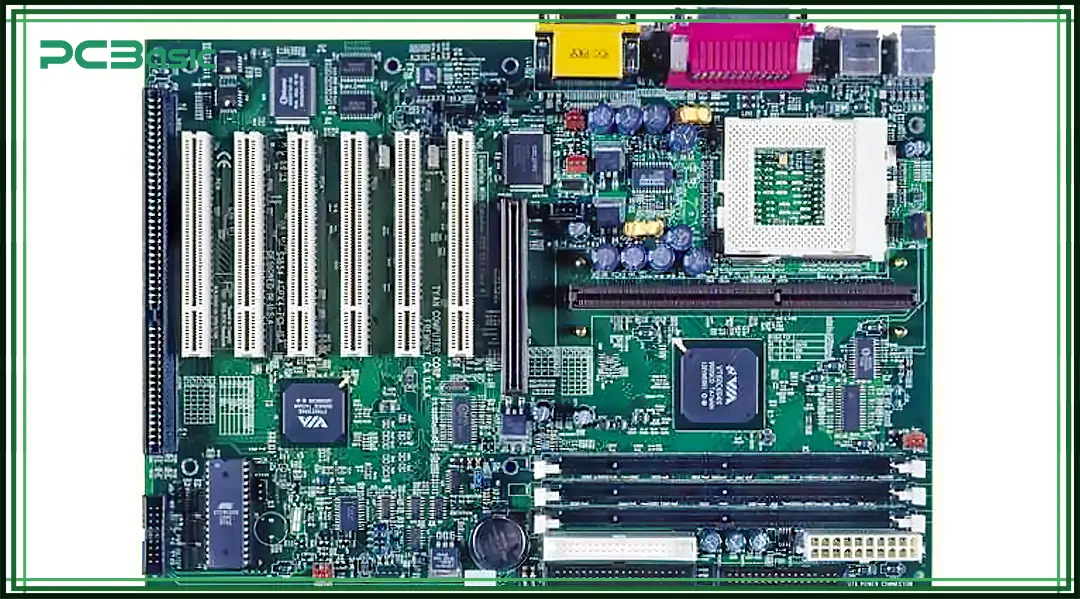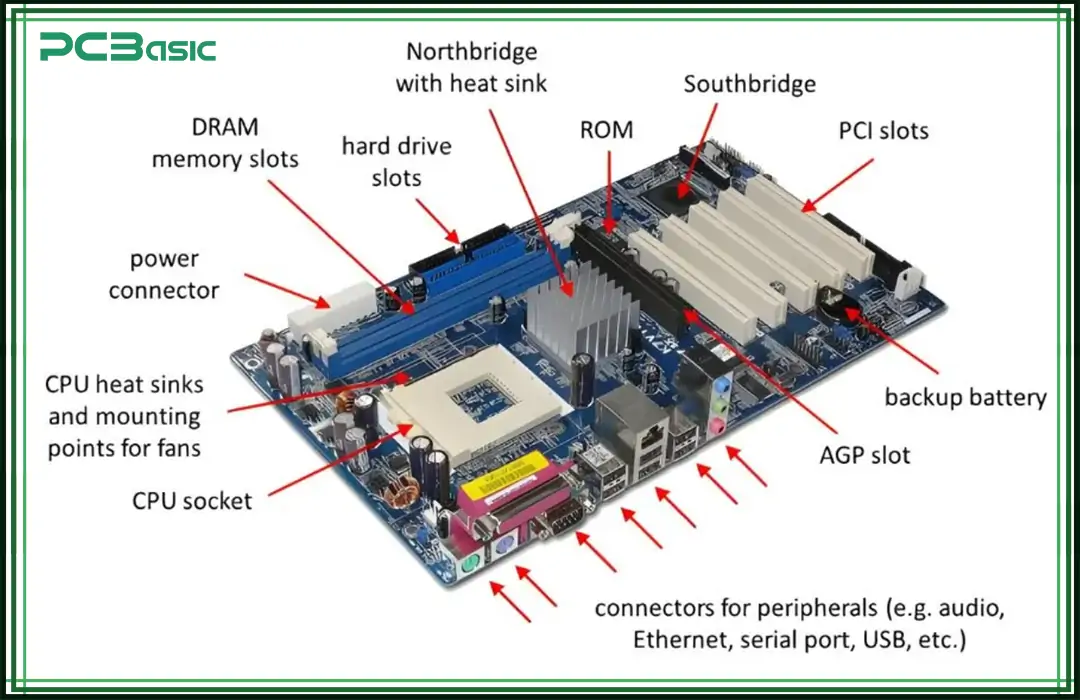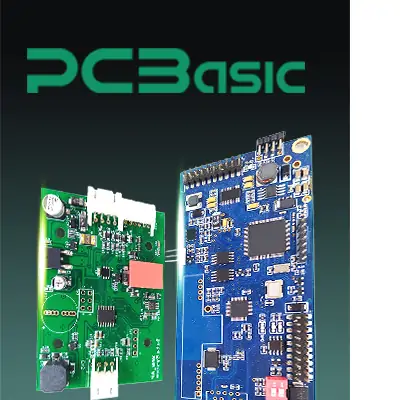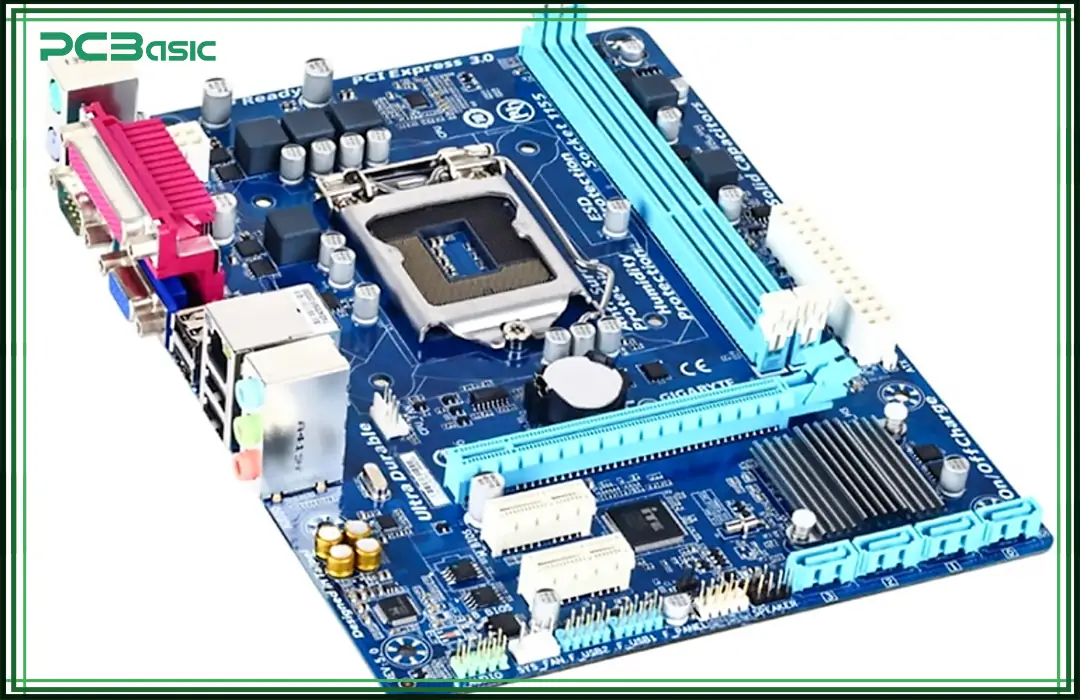

Global high-mix volume high-speed PCBA manufacturer
9:00 -18:00, Mon. - Fri. (GMT+8)
9:00 -12:00, Sat. (GMT+8)
(Except Chinese public holidays)


Global high-mix volume high-speed PCBA manufacturer
9:00 -18:00, Mon. - Fri. (GMT+8)
9:00 -12:00, Sat. (GMT+8)
(Except Chinese public holidays)
HomePage > Blog > Knowledge Base > What Does a Motherboard Do? Functions, Components and Types
The motherboard, also called the mainboard, is the core of every computer. If there is no motherboard, the various hardware in the computer cannot be connected and work with each other. The motherboard connects the CPU, memory, storage, graphics card and peripherals together, allowing them to operate in coordination. Whether it's assembling a gaming computer, upgrading a workstation, or wanting to understand how a computer works, one needs to understand the function of the motherboard first.
This article will clarify the functions of the motherboard, introduce the main motherboard components, compare different motherboard types, and provide practical motherboard comparisons to help you choose the right hardware.

In simple terms, the motherboard is the center where all the hardware in a computer is interconnected and communicates with each other. The CPU, memory, hard drives, graphics card and other devices are all connected through various interfaces, slots and connectors on the motherboard.
The motherboard mainly has the following functions:
Power distribution
The power supply sends electricity to the motherboard, and then the motherboard distributes the power to each motherboard component to enable them to work properly.
Data communication
The motherboard enables rapid data exchange among hardware such as the CPU, GPU, memory, and storage devices, ensuring the smooth operation of the computer.
Device control
There is the firmware (BIOS or UEFI) on the motherboard. When the computer is turned on, the firmware starts up and detects all the motherboard components to ensure that the hardware is ready for use. Meanwhile, it is also responsible for the management of some system settings.
Expansion
There are expansion slots on the motherboard, allowing for the installation of more hardware, such as graphics cards, sound cards, and network cards, making it convenient for the computer to upgrade and expand new functions.
Simply speaking, the motherboard combines all the parts of a motherboard together, allowing the entire computer to work properly like a complete system.
To truly understand the role of the motherboard, one must first be clear about the function of each motherboard component. The following is a brief description of the main motherboard part:

This is one of the most important parts of the motherboard. The CPU slot is used to fix the processor and ensure the correct connection of the circuit. CPUs of different brands and models require different slots. So, when choosing a CPU, it is necessary to pay attention to a motherboard comparison and check whether the slots are compatible.
Memory slots (also known as DIMM slots) are used to install memory sticks (RAM). The number of slots on different motherboard types varies, which determines how much memory you can add. The more slots there are, the larger the supported memory capacity is usually.
The chipset seems to be the traffic controller in the motherboard components. It is responsible for arranging the data transmission among the CPU, memory and peripherals. Nowadays, chipsets generally integrate the functions of the previous northbridge and southbridge together, making them more efficient.
These slots include PCI Express (PCIe) slots where you can install graphics cards, sound cards, network cards, and more. The expansion slot is an important part of the motherboard, facilitating system upgrades and functional expansions.
The SATA interface and M.2 slot on the motherboard are used to connect storage devices such as hard drives and solid-state drives. The M.2 slot can support a faster storage speed.
 About PCBasic
About PCBasic
Time is money in your projects – and PCBasic gets it. PCBasic is a PCB assembly company that delivers fast, flawless results every time. Our comprehensive PCB assembly services include expert engineering support at every step, ensuring top quality in every board. As a leading PCB assembly manufacturer, we provide a one-stop solution that streamlines your supply chain. Partner with our advanced PCB prototype factory for quick turnarounds and superior results you can trust.
There are 24-pin and 8-pin power interfaces on the motherboard, which distribute the power provided by the power supply to all motherboard components to ensure their normal operation.
These interfaces are concentrated on the I/O panel on the back of the motherboard. Common ones include a USB interface, network port (Ethernet), HDMI interface, and audio interface, which facilitate the connection of external devices.
There is a BIOS or UEFI chip on the motherboard. When the computer is turned on, it is responsible for detecting the hardware, starting the system, and allowing users to set and adjust the hardware parameters.
This is a small battery. Even if there is a power outage, the system settings and clock time on the motherboard will not be lost. This is all thanks to the power supply from this battery.
If you have ever opened a computer case, you must have seen a motherboard. So, what exactly does a motherboard look like?

The mainboard is a large and flat multilayer printed circuit board, usually in the shape of a square or rectangle. Near the middle of the top is usually the CPU slot, with memory slots arranged beside it.
Expansion slots, like PCIe slots, are usually arranged horizontally in the middle or lower parts of the motherboard, facilitating the installation of expansion cards such as graphics cards, sound cards or network cards.
Storage interfaces, such as SATA interfaces and M.2 slots, are distributed along the edge of the motherboard and are used to connect hard drives or solid-state drives. The power interface is usually located on one side of the motherboard and is used to connect the power cord for the power supply.
On one side of the motherboard is the rear I/O panel, which has USB interfaces, network ports, HDMI interfaces and audio interfaces, making it convenient to connect various external devices. Although different types of motherboards have some differences in layout design, the overall structure is roughly similar. When comparing motherboards, these layout differences will affect the actual usage effect, such as whether the case can be installed and whether the heat dissipation is smooth.
Understanding the material composition of the motherboard can help us better understand why different motherboards differ in price, durability and performance. Most motherboards are mainly composed of the following materials:
Fiberglass (FR4): This serves as the framework of the motherboard, providing support and making the motherboard as a whole sturdy and less prone to bending or damage.
Copper layer: Inside the motherboard, there are multiple layers of copper traces. These copper layers connect different motherboard components and are responsible for transmitting current and signals, ensuring the normal operation of each part of the motherboard.
Solder mask layer: This is a protective layer covering the surface of the motherboard. The common color is green. It can prevent short circuits in the circuit and protect the internal circuits from external damage at the same time.
Silkscreen: Text and symbols are printed on the surface of the motherboard to indicate the positions and names of each part of the motherboard, facilitating installation and maintenance.
Metal and plastic parts: Used for various slots, ports and connectors, facilitating the plugging, unplugging and fixation of hardware devices.
High-end motherboards may use better materials and design more circuit layers, which can enhance electrical performance, reduce signal interference, and, at the same time, strengthen heat dissipation capabilities. Therefore, when choosing a high-performance computer, it is very important to make a detailed comparison of the motherboard, as the material and workmanship directly affect the overall performance and service life.

There are many types of motherboards, and different types of motherboards are suitable for different uses and case spaces. Choosing the right motherboard depends on your usage requirements, space size and hardware compatibility. Here, let’s have a look at common motherboard types:
This is the most common type of desktop motherboard. The ATX motherboard is relatively large in size, providing ample space and equipped with multiple expansion slots, allowing for the installation of expansion hardware such as graphics cards, sound cards, and network cards. Meanwhile, its motherboard components are also very rich, such as more memory slots and interfaces, making it very flexible to use and suitable for gaming, office work and professional purposes.
This type of motherboard is slightly smaller than ATX, with a more compact size and fewer expansion slots than ATX. It is suitable for computer configurations with limited budgets, low requirements for expansion, or relatively small enclosure space.
This is the smallest motherboard type in the consumer market and is highly suitable for use in mini consoles or small PCs in the living room. Due to its very small size, the available motherboard section is also relatively limited, usually with only one PCIe expansion slot and a few memory slots. However, it is sufficient for light usage or users who need to save space.
This type of motherboard is larger than the standard ATX and has more space to place additional motherboard components. For instance, it can support more memory slots and multi-graphics card systems and is often used in high-end gaming computers, content creation workstations and professional servers.
This is a special type of motherboard specifically designed for enterprise-level or industrial environments. This type of motherboard typically supports ECC memory to enhance data security. It also supports multiple CPU slots, enabling it to handle more computing tasks. Additionally, it is equipped with remote management functions, facilitating remote control and maintenance of data centers or servers.
|
Motherboard Types |
Size |
Expansion Slots |
Use Case |
|
ATX |
12" x 9.6" |
Up to 7 |
Gaming, Workstations |
|
Micro-ATX |
9.6" x 9.6" |
Up to 4 |
Budget Builds |
|
Mini-ITX |
6.7" x 6.7" |
1 |
Compact PCs |
|
E-ATX |
12" x 13" |
8+ |
High-End Systems |
|
Server |
Varies |
Varies |
Enterprise |
The motherboard is the core that brings a computer to life. As a motherboard, it connects the CPU, memory, storage and all peripherals, enabling efficient communication between hardware.
By understanding the function of the motherboard, being familiar with each component of the motherboard, mastering the main parts of the motherboard, and having a deep understanding of different types of motherboards, you can make better decisions when installing a computer, upgrading or troubleshooting.

Assembly Enquiry
Instant Quote
Phone contact

+86-755-27218592
In addition, we've prepared a Help Center. We recommend checking it before reaching out, as your question and its answer may already be clearly explained there.
Wechat Support

In addition, we've prepared a Help Center. We recommend checking it before reaching out, as your question and its answer may already be clearly explained there.
WhatsApp Support

In addition, we've prepared a Help Center. We recommend checking it before reaching out, as your question and its answer may already be clearly explained there.
